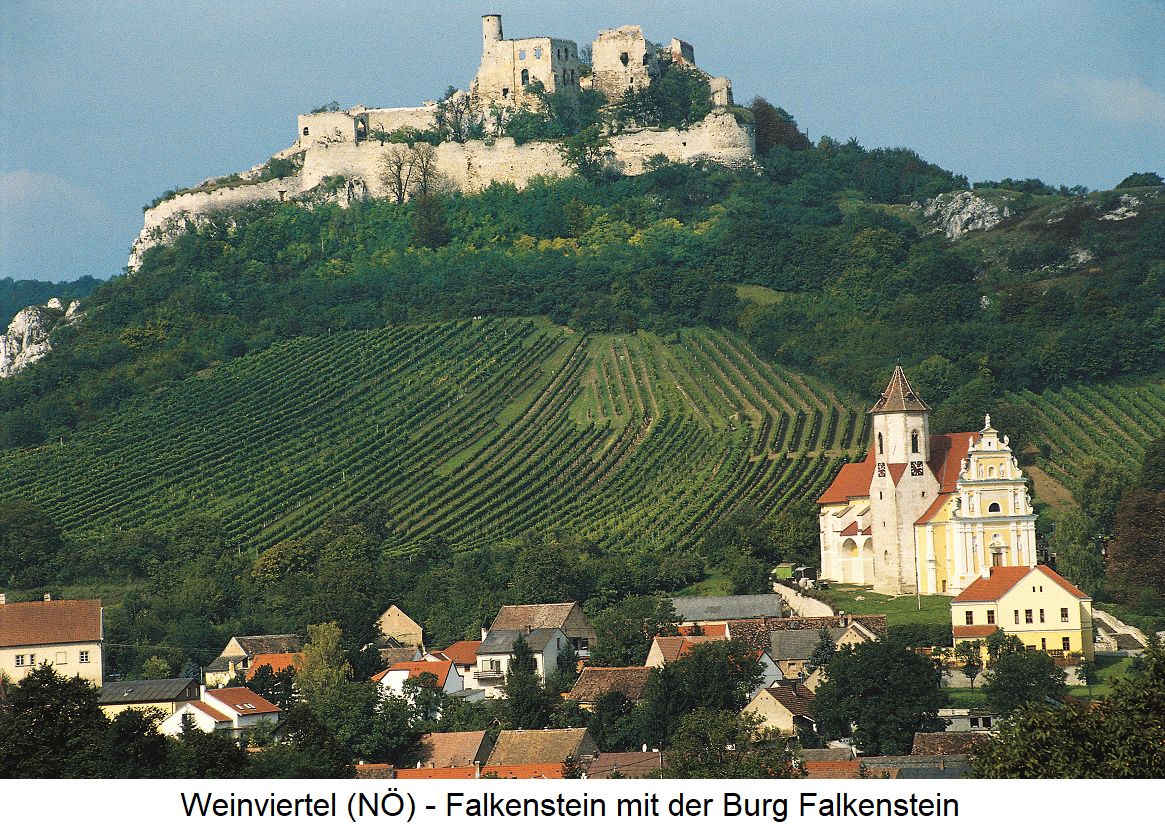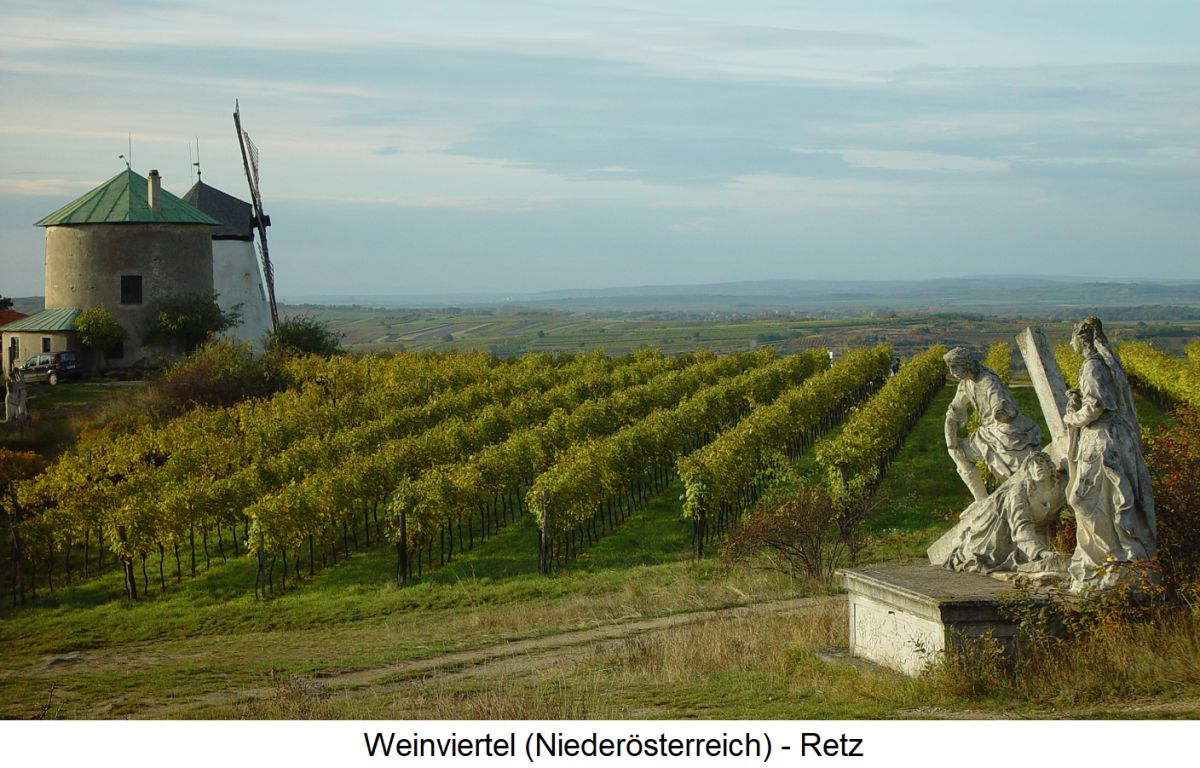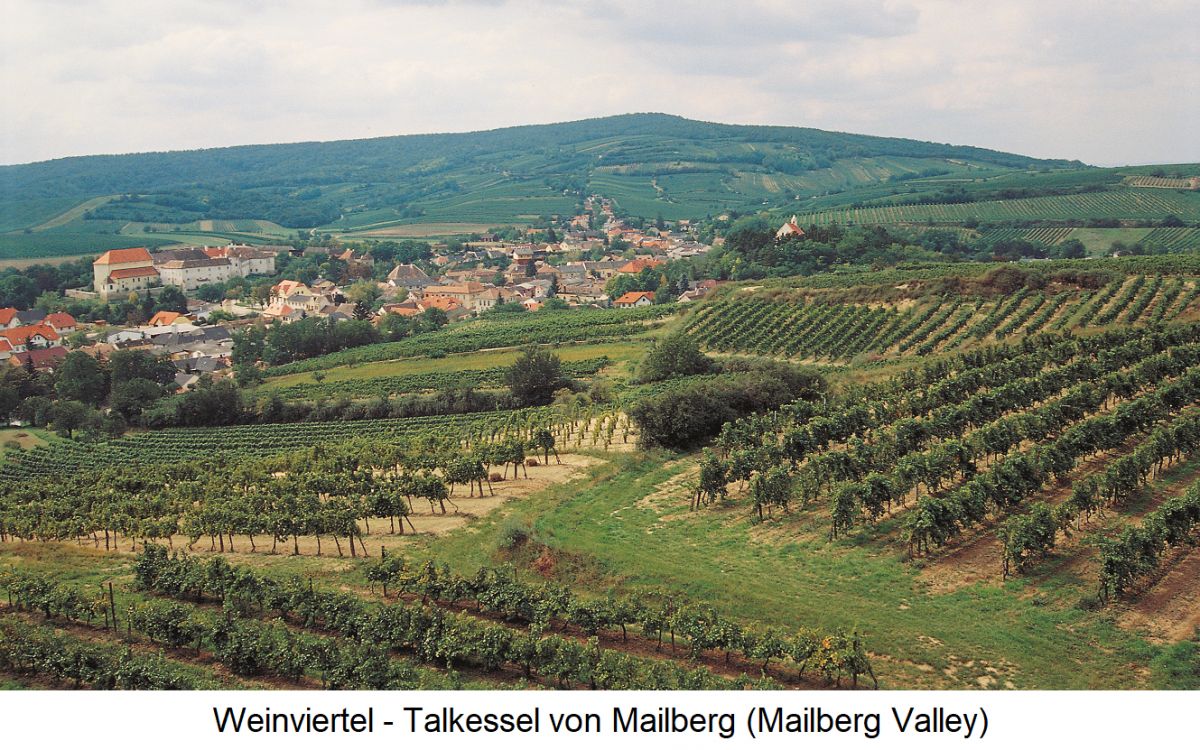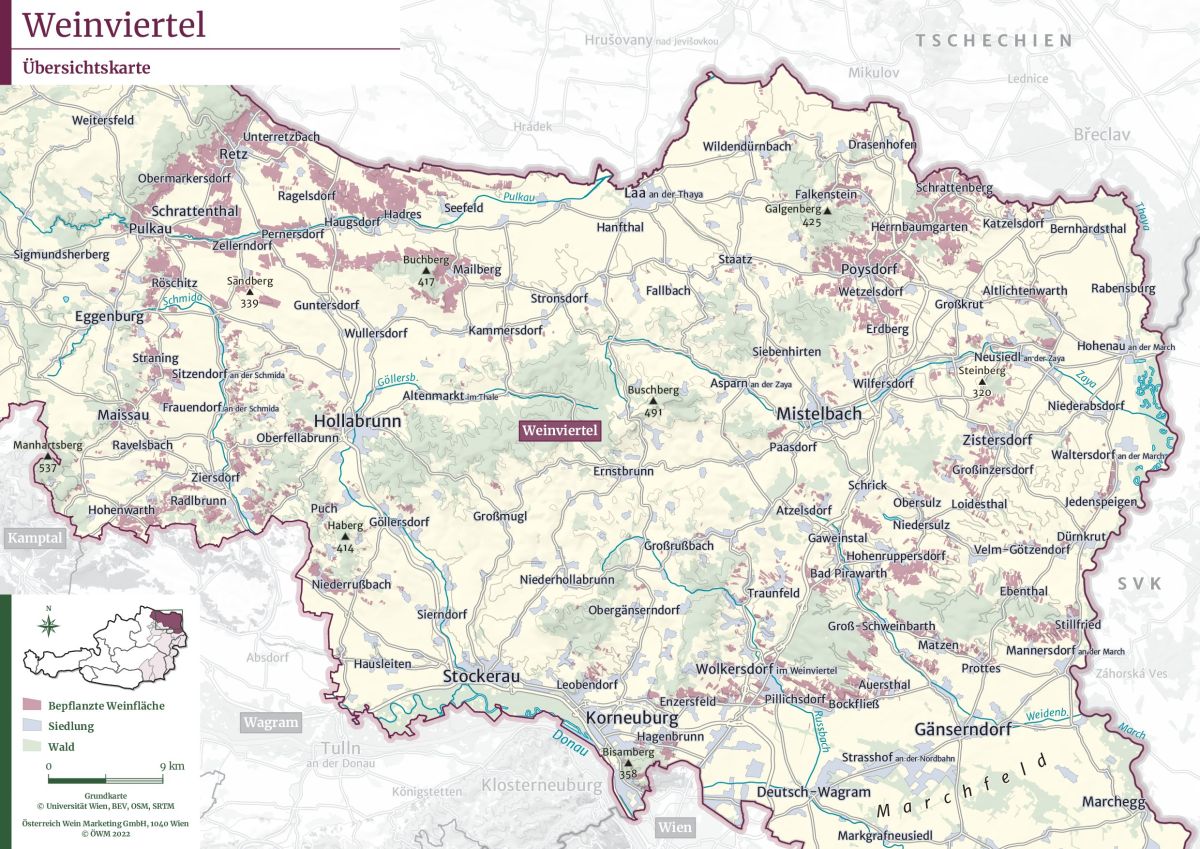Since the 2002 vintage, wine-legally defined DAC area (specific wine-growing region) in the Austrian wine-growing region of Lower Austria (generic wine-growing region). See under Weinviertel.
Weinviertel
One of the eight specific wine-growing regions in the Austrian province or generic wine-growing region of Lower Austria. Viticulture was already practised here by the Celts before the birth of Christ. Grape seeds of the cultivated vine Vitis vinifera were found in the municipality of Stillfried, dating back to 900 BC. This makes it one of the oldest wine-growing communities in Central Europe, alongside Zagersdorf in Burgenland. The typical Weinviertel wine is named Brünnerstraßler after an old trade route from Vienna to Brno in the Czech Republic. The gently undulating region north of the Danube borders the Czech Republic in the north and stretches from the Manhartsberg in the west to the border with Slovakia in the east.

Wine-growing areas
The Weinviertel is not a closed area, but consists of many, sometimes small vineyard islands. It used to be divided into three areas. These were Falkenstein, Retz and Mailberg.
Falkenstein
The eastern area Falkenstein begins in the south near Vienna. The most important wine-growing communities with the best-known vineyards are Bisamberg (Gabrissen, Jungenberg, Wiesthalen), Bockfliess, Falkenstein (Alsen, Eckartsberg, Kreuzberg, Rabenstein, Rosenberg), Enzersfeld (Sandtal), Gänserndorf, Herrnbaumgarten, Katzelsdorf, Kleinhadersdorf (Birthal, Bockgärten, Hochenleiten), Korneuburg, Langenzersdorf, Mannersdorf, Matzen, Mistelbach, Münichsthal (Seewansche Lagen), Poysbrunn, Poysdorf (Bürsting, Hermannschachern, Kirchbergen, Saurüsseln, Weiße Bergen), Schrattenberg, Stetten (Haidviertel, Hundsleiten, Mitterviertel, Neuberg, Zeiseneck), Wetzelsdorf, Wolkersdorf and Zistersdorf.

Retz & Mailberg
The area to the west Retz extends from the municipality of Großriedenthal in the south to the eponymous municipality of Retz in the north. The most important wine-growing communities are Eggenburg, Frauendorf, Haugsdorf, Hohenwarth-Mühlbach, Hollabrunn, Kleinhaugsdorf, Limberg, Maissau, Mühlbach am Manhartsberg, Ravelsbach, Retz with Oberretzbach, Mitterretzbach and Unterretzbach (Altenberg, Klafel, Satzen, Züngel), Röschitz, Ruppersthal, Schrattenthal, Sitzendorf and Ziersdorf. The vineyards of the Mailberg with the Hundschupfen vineyard form a very special climatic island.

Climate & Soils
The soil types are very varied due to the very wide area, but loess, loam, primary rock and black earth soils dominate. The climate is continental, with a Pannonian influence only in the far east. Summers are predominantly hot and dry and winters are cold. The vineyards lie between 200 and 250 metres above sea level. The best vineyards are in locations with a particularly favourable microclimate, such as Bisamberg, Falkenstein, Mailberg and Retz. The "Weinviertel Wine Route" was founded in 2001 to promote wine and cultural tourism. Over a length of more than 130 kilometres, 150 municipalities with over 500 wine-growing businesses are involved.

Grape variety index
In 2022, the vineyards covered a total of 13,911 hectares of vines. Compared to 2015 with 13,858 hectares, this was a reduction of 53 hectares (0.4%). The proportion of white wine varieties is 79%, while the proportion of red wine varieties is 21%. The clearly dominant white wine variety Grüner Veltliner accounts for half of the total, which is why the region is also known as "Veltliner country". It is followed by Zweigelt, Welschriesling, Riesling, Müller-Thurgau and Muskateller.
Grape variety
|
in Austria
|
colour |
HA
|
%
|
HA
|
%
|
| Grüner Veltliner | White plum | white | 6.975 | 50 | 6.672 | 48,1 |
| Zweigelt | Blauer Zweigelt, Rotburger | red | 1.840 | 13,2 | 1.638 | 11,8 |
| Welschriesling | - | white | 926 | 6,7 | 1.091 | 7,8 |
| White Riesling | Riesling Rhine Riesling | white | 693 | 5 | 562 | 4,1 |
| Müller-Thurgau | Rivaner | white | 454 | 3,3 | 546 | 3,9 |
| Muscat | Yellow M., Red M. / Muscat Blanc | white | 412 | 3,0 | 170 | 1,2 |
| Pinot Blanc | Pinot Blanc,... |
Voices of our members

As honorary chairman of the Domäne Wachau, it is the easiest and quickest way for me to access the wein.plus encyclopaedia when I have questions. The certainty of receiving well-founded and up-to-date information here makes it an indispensable guide.
Hans-Georg Schwarz
Ehrenobmann der Domäne Wachau (Wachau)